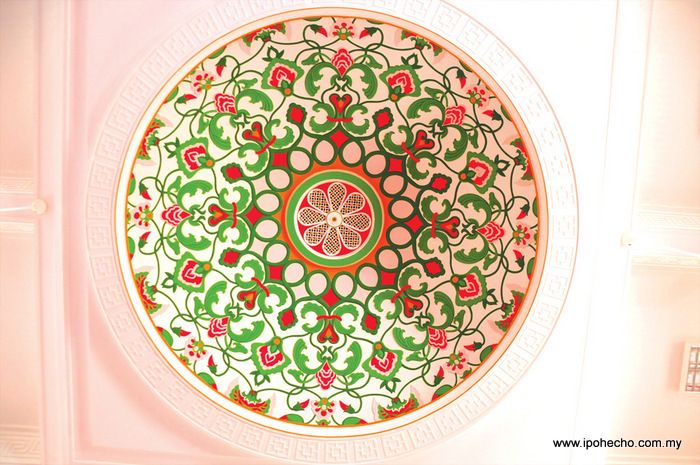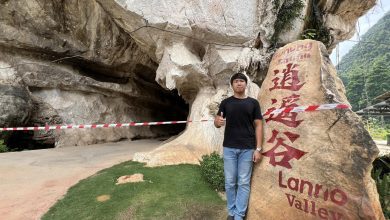Mosques in Ipoh


Cover Story
By Ili Aqilah
Did you know there are more than 50 mosques in Ipoh alone? Continuing the series of discovering places of worship around Ipoh, we turned on our research mode and discovered five mosques that stand out from the rest. From historical anecdotes to unique architecture, we are certainly blessed to live in a multi religious country as we get to explore and learn more about one another’s belief systems and heritage. Let’s check out these mosques!

From landmarks to love and geographical architecture, Mosques in Ipoh provide edifying glimpses of history and culture
The one with the oldest history: Kampung Paloh Mosque

As one of the oldest mosques in Ipoh, the work of Kampung (Kg) Paloh Mosque began in 1912 by Wan Muhammad Salleh who was the superintendant of Penghulus (village heads) and assistant collector of Land Revenue under Sir Frank Athelstane Swettenham, the first Resident General of the Federated Malay States.
The construction was funded by two prominent individuals at the time and one of them was Long Kassim. In return for his generous help, the administration of the mosque was given to his grandchildren and today it is still being handled by one of his grandchildren. Despite undergoing extensive renovation over the years, the original five-tiered minaret and mausoleum of its founders are still in their original form.
Kampung Paloh Mosque is located at Jalan Datoh, 31650 Ipoh.


The one as most prominent landmark: Sultan Idris II Mosque
Known to many as the official mosque for the state of Perak, Sultan Idris II mosque is located right in the centre of Ipoh. It is one of the largest mosques in Ipoh with facilities that are more advanced than the rest, such as conference rooms, library, open space hall (available for rent) for weddings and the best, a free guided tour.
Sultan Idris II mosque was built in May 1966 and the foundation stone was laid in 1967 by Tun Haji Abdul Razak who was, at that time, the Deputy Prime Minister. It was completed in 1968 and later officiated by Sultan Idris Iskandar II, in conjunction with his 54th birthday celebration in September 1978.


Visitors keen on visiting the mosque can do so by calling the mosque’s management office located within the compound. There, visitors are provided abayas (long dresses) as guests will need to dress appropriately when visiting. With its strategic location (in front of Ipoh Railway Station), this mosque has always been one of the prominent landmarks of Ipoh City.
Sultan Idris II Mosque is located at Jalan Panglima Bukit Gantang Wahab, 31650 Ipoh.
Echo Tips: After the tour, be sure to take a stroll at Little India or head to Kong Heng’s square for coffee! The mosque is also a place for cat lovers as friendly felines roam around the mosque.
The one with Chinese influence: Muhammadiah Mosque
When it was first built, it caused quite a sensation with its unique Chinese architecture and design.
What started as a small surau (prayer house) by the late Haji Abdul Latif and his friends in 1978 has grown to be one of the most unique mosques in Ipoh. After several renovations and refurbishments, the surau has transformed into a mosque complete with learning centres and recreational spots for various activities.




From far, many might mistake the mosque for a Chinese temple until they see the signboard located at the entrance. Unlike the one in Kelantan which has Thai architectural influences, the mosque is 100 per cent influenced by Chinese traditional architecture, including the colour of the building which is red; symbolising happiness and good luck.
Muhammadiah Mosque is located at Lot 70406, Jalan Musim Bunga, Taman Tasek Jaya, Ipoh.




The one with Indian sway: Indian-Muslim Mosque

Shaikh/Sheikh Adam came to the country from India and he was one of the leading Indian businessman at the time when he decided to build a mosque for the Muslim community. Construction of the mosque began in 1908 employing Indian workers. It has some similarities with Diwan-I-Khas (Red Fort) in Delhi, reflecting the Indian influence in its design.
Aside from its strong Indian influence, the mosque is known to many for its signature ‘Bubur Lambuk’, given only during the holy month of Ramadan to the public for free. Located next to St Michael Institution Ipoh, there are also dorms and rooms available for rent at the mosque.


Its strategic location has made this mosque among the easiest to find. This Indian-Muslim mosque is located at Jalan Seenivasagam, 30450 Ipoh (opposite Ipoh Padang).
Echo tips: This mosque is located a stone’s throw from Ipoh’s Old Town; a place filled with murals, handmade crafts and unique eateries.
The one with a love story: Panglima Kinta Mosque
Built in 1898, Panglima Kinta Mosque was a work of love by Dato Panglima Kinta Mohamed Yusof as a tribute to his late wife who passed away the same year. It was said this mosque was one of the earliest built in Ipoh along with Kampung Paloh Mosque. The architecture of the place was mainly influenced by the glory of Indian mogul architecture. Located right after Hugh Low street (Jalan Iskandar Shah), it has a central dome and two minarets. The mosque did go through a few restorations but the design has remained unchanged.
Should you wish to visit this place, don’t be shocked to see a mausoleum located behind the mosque. The chambers of the mausoleum house the remains of members of Dato Panglima Kinta’s family and also Sheikh Tholji, a famous Quran teacher from Egypt who popularised Quranic recitation in Perak.


Panglima Kinta Mosque is located at Jalan Masjid, Kampung Kuchai (before entering Hugh Low bridge, you’ll see on the left, a small signboard with the mosque’s name).
Echo tips: After visiting, head on to the mural alley located in front of the mosque. All the paintings are done by local artists and residents of Ipoh!
Potential tourist spots
With many mosques currently undergoing renovations and upgrades, it is definitely wise to make mosques a must-visit spot in your itinerary when in Perak. Tourism Perak has launched the ‘Perak Mosque Trail’ last year where visitors can mosque-hop and learn about prominent prayer houses along the trail.
With initiatives like this, it is small wonder that for three years running, Perak has recorded the highest number of domestic tourists compared to other states.
Look out for our upcoming stories on Churches and Gurdwaras soon!


